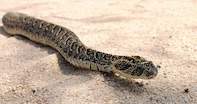
Snakes tend to shy away from humans and only attack if they're caught by surprise. Nonetheless, one should be cautious at camps and lookout points. If you come across a snake in a camp, please alert the camp staff immediately.
The Killer Snakes of Kruger
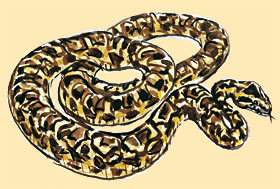 African Rock Python (Python sebae)
African Rock Python (Python sebae)
Characteristics
Largest snake in Africa - up to 5m long; crushes its prey to death; generally nocturnal but seen during the day
Prey
Dassies, hares, cane rats, birds; has been known to take impala and young antelope and warthogs
Habitat
Mixed woodlands near water; very good tree climbers
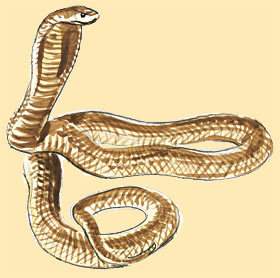 Egyptian Cobra (Naja haje)
Egyptian Cobra (Naja haje)
Characteristics
Largest cobra, approx 1,5m long; when disturbed it rears up and displays a broad hood; very fast moving striker with toxic venom
Prey
Small mammals, birds and their eggs, frogs
Habitat
Mixed woodlands near water
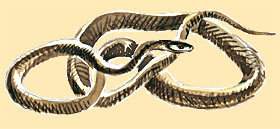 Black Mamba (Dendroaspis polylepis)
Black Mamba (Dendroaspis polylepis)
Characteristics
One of the most poisonous snakes in Africa; about 2m long; very fast strikers and can slither at speeds of up to 15km/h
Prey
Birds, rodents, dassies and other small animals
Habitat
Dry lowveld bush; lives in abandoned termite hills, animal holes and among rocks; loves basking in the sun
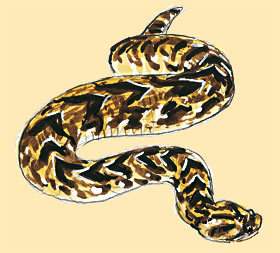 Puff Adder (Bitis arietans)
Puff Adder (Bitis arietans)
Characteristics
Responsible for more human bites than all other African snakes combined - most attacks are because it is trodden on; front fangs make venom delivery extremely effective; sluggish, fat snake about 1,5m long
Prey
Rodents, birds, other snakes; a puff adder has once been recorded killing a tortoise
Habitat
Very fond of lying in the sun; found in all Kruger habitats - one of the most widely distributed snakes in Africa
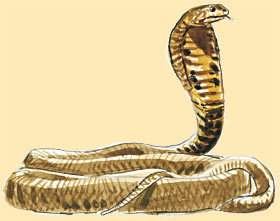 Mozambique Spitting Cobra (Naja mossambica peters)
Mozambique Spitting Cobra (Naja mossambica peters)
Characteristics
One of the most poisonous snakes in Africa; rears up two-thirds of its body length when disturbed, displays hood and spits venom with amazing accuracy (they can spit venom into the eyes of an aggressor three metres away);average length approximately 1m
Prey
Birds' eggs, small mammals and reptiles
Habitat
Mixed savanna woodland; favours hollow trees and abandoned burrows near water
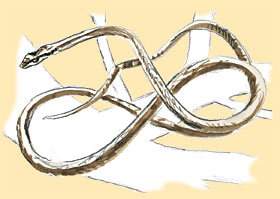 Twig Snake (Thelotornis capensis)
Twig Snake (Thelotornis capensis)
Characteristics
Slender, fast-moving tree snake about 1,3m long; can stay motionless for long periods of time; well camouflaged and very poisonous
Prey
Birds and their nestlings and eggs
Habitat
Mixed woodland near water
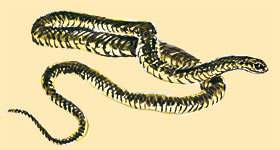 Boomslang (Dispholidus typus)
Boomslang (Dispholidus typus)
Characteristics
Highly venomous, greenish tree snake, about 1,5m long
Prey
Birds' eggs, small mammals and reptiles
Habitat
Thick woodlands near water
Other notable reptiles in Kruger are two species of monitor lizards (leguaans), the water and the rock monitors. The water leguaan can be up to two metres long and is found at permanent water sources in Kruger. It feeds mainly on fish, crabs, mussels, small animals and birds.
Rock monitors can be found quite far from water in rocky outcrops and crevices. They grow up to 1,5m and feed on small mammals, birds, eggs, other reptiles and insects.
Illustration: Chris Snaddon

